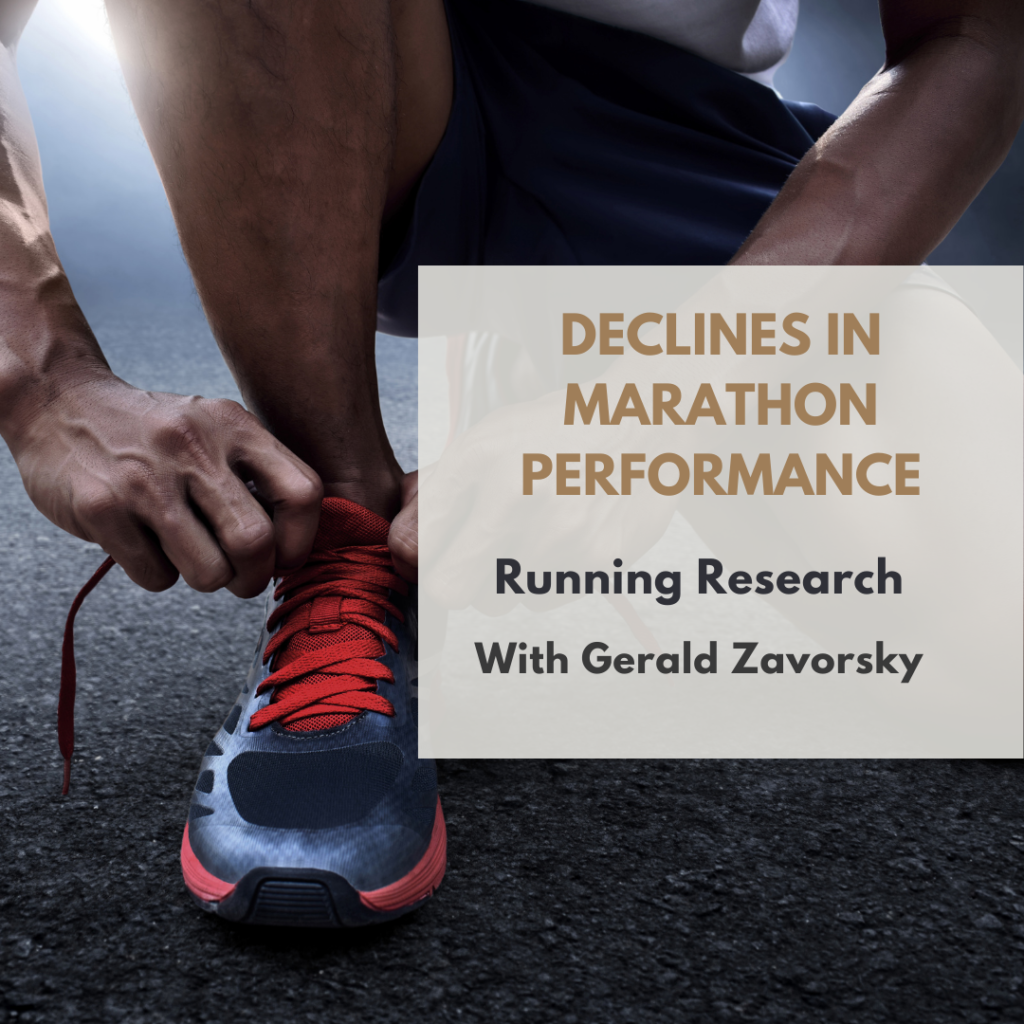Declines in Marathon Performance: Essential Running Research from Gerald Zavorsky
Check out our featured interview with running research expert on the Declines in Marathon Performance: Sex Differences in Elite and Recreational athletes.
Have you ever wondered the scientific reason behind why runners slow down with age?
Are you curious about sex differences in marathon running with advanced age?
Be sure to read the article published by Gerald Zavorsky et al, “Declines in Marathon Performance: Sex Differences in Elite and Recreational Athletes“. Our podcast episode features an in-depth article with the lead researcher.
Dr. Zavorsky describes the “U Shape” associated with running performance.
Specifically, if you track athletic performance from a very young age all the way to the 80s-90s, you see a “U Shape”. Early performance gains are slow and speed up with a dramatic increase during late childhood and young adulthood. This is secondary to the dramatic increase in height and thoracic volume. Prime running age peaks somewhere between age 25-35 and then performance heads up the other side of the “U”.
After age 35 or so, Dr. Zavorsky notes that performance declines because oxygen consumption is reduced.
VO2 max is the maximum amount of oxygen your body can consume based on kg of body weight. He states that VO2 max goes down by about 1-2% per year after age 35. Throughout the interview, Dr. Zavorsky expands on how he and and his fellow researchers collected data from elite marathon runners and ‘average marathoners’ in the Chicago Marathon, New York City Marathon, and Boston Marathon.
With respect to the “Why do runners slow down with age”, Dr. Zavorsky highlighted two main causes:
- Drop in maximum heart rate, resulting in lower cardiac output and less blood to the body.
- Drop in VO2max, especially related to a loss of muscle mass (he notes the importance of strength training for older runners).

When comparing elite marathoners to the ‘average’ marathoner, elites slowed down at earlier age.
However, Zavorsky noted that many ‘average’ marathoners started running later in life and thus did not have the established times during their prime for comparison sake. He recommended the use of Age Graded Calculators for measuring improvements as a masters runner.
Dr. Zavorsky’s future research may include more scientific data on the influence of gender, specifically pregnancy, on running performance. Check out more running statistics here.
